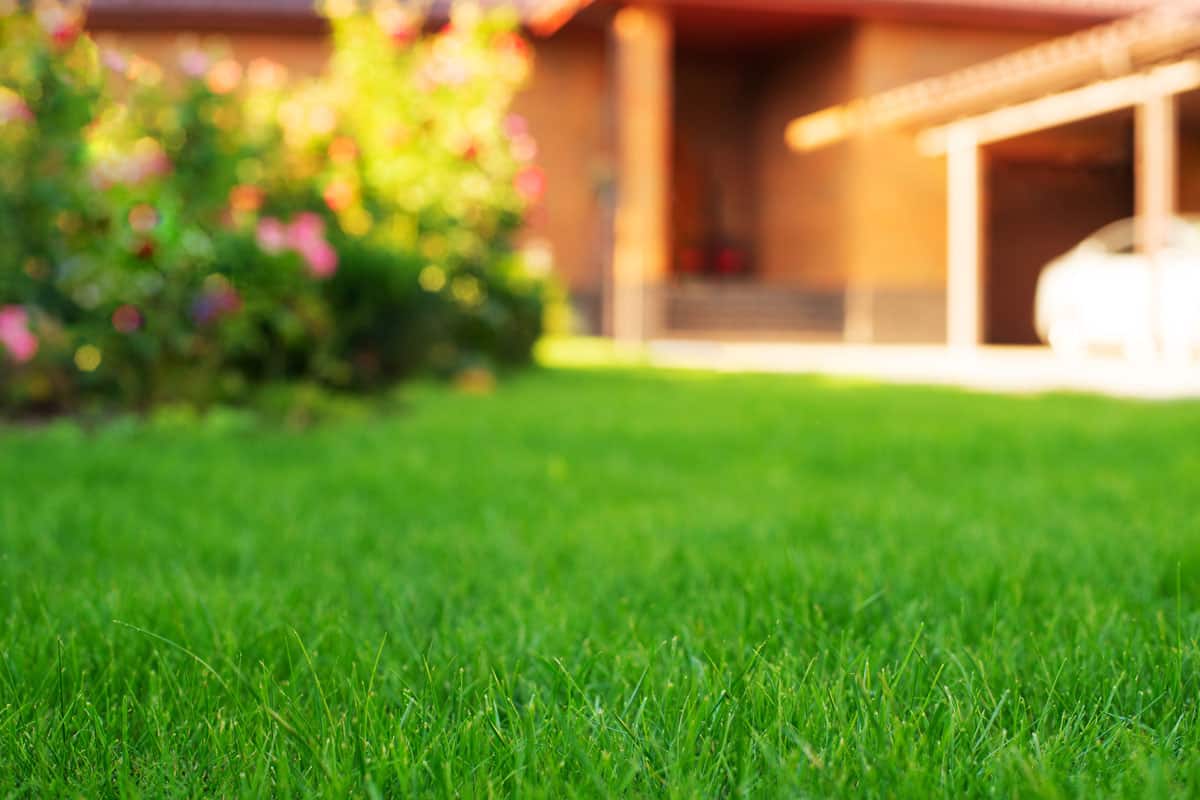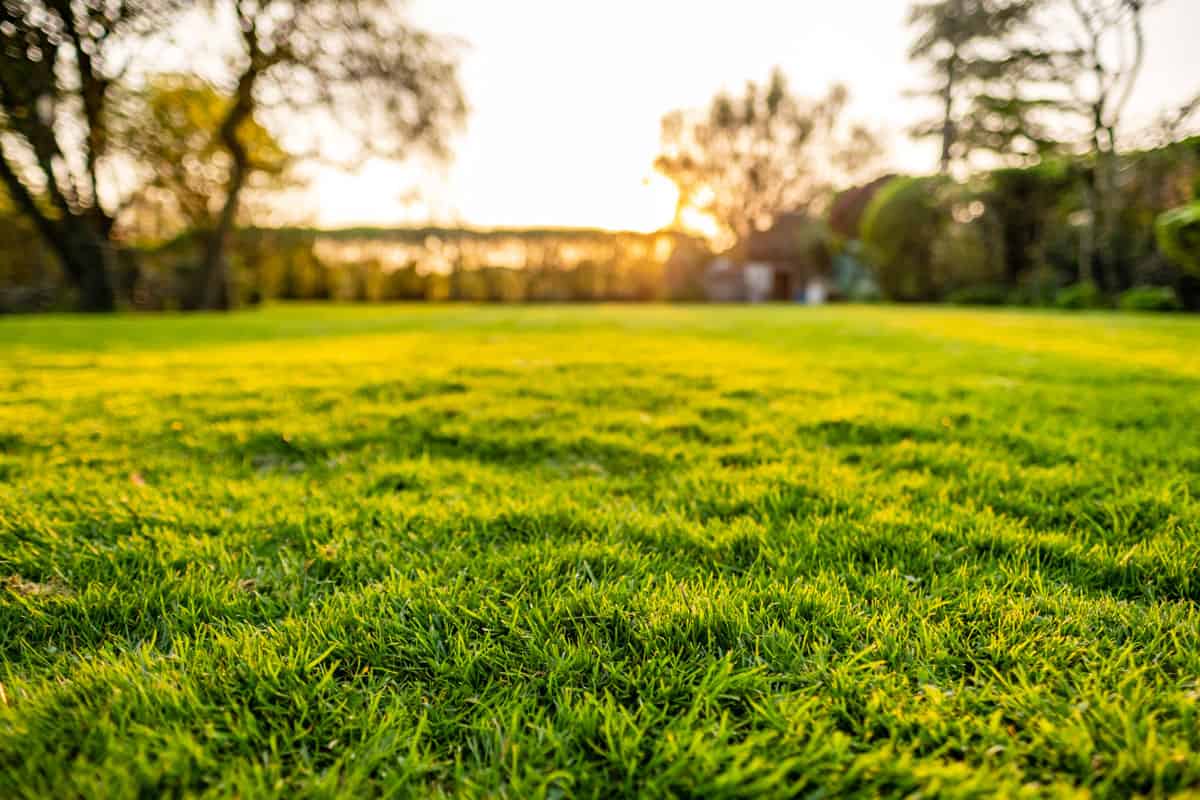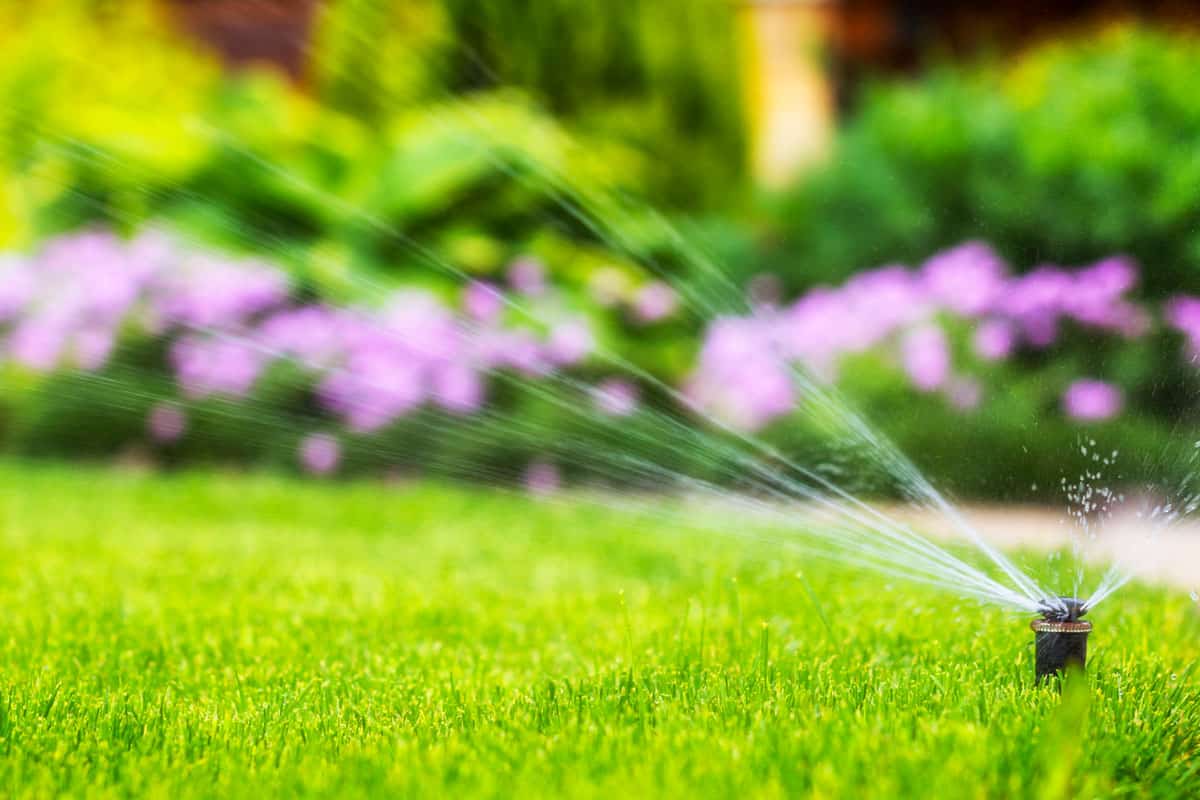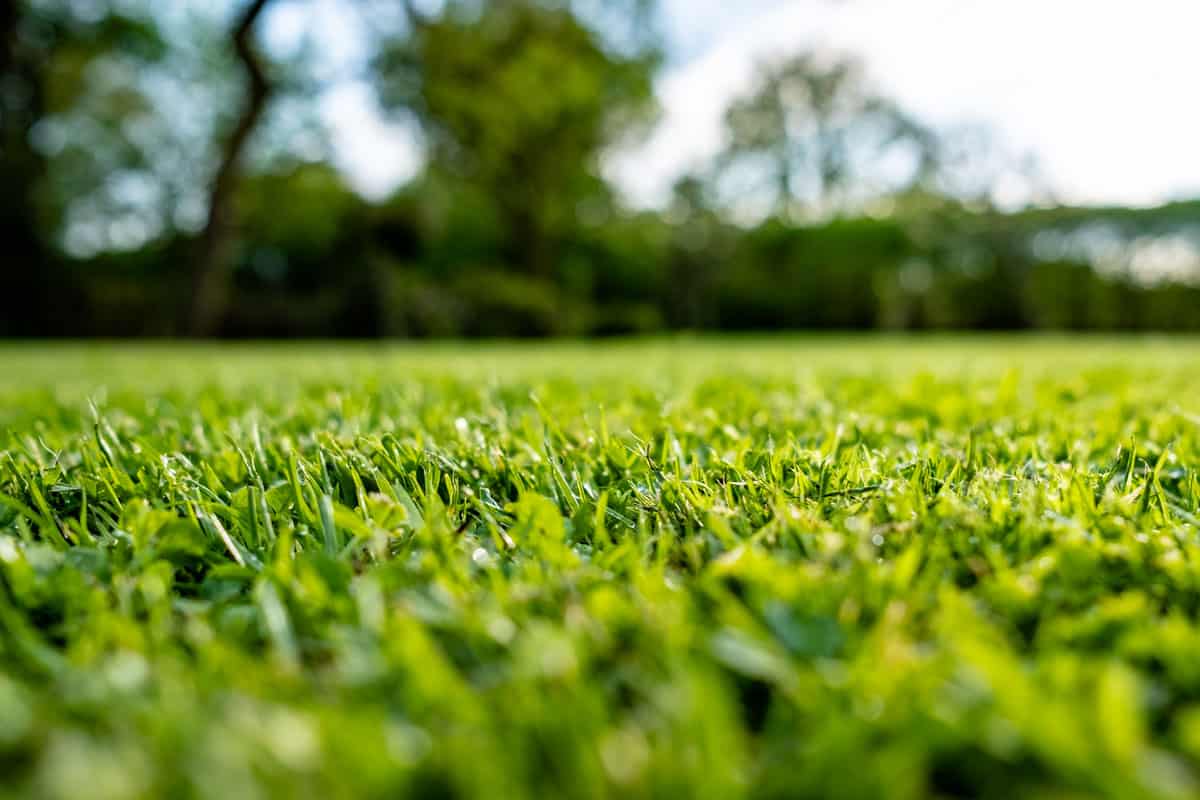Plant growth regulators are gaining popularity among farm and garden owners. You might be wondering if you should apply one to your lawn, when, and how to go about it. If so, you're in the right place because we asked for advice from gardening experts, and here's what they said.
A plant growth regulator (PGR) can be applied anytime during the growing season. It can be applied early during planting as a preventive method to plant disease or later, during the growing season to increase root vigor.
A PGR can also be applied for seed treatment. You can apply a PGR by following the simple steps below
- Get any can or pipe with a good spray nozzle.
- Spray the PGR on your lawn.
Plant growth regulators are very useful for your lawn. With proper application, they can help you achieve a lush and healthy lawn. Keep reading to learn more about when and how to apply them.
![grass on the park, green grass, trees on the back, When To Apply Growth Regulator To Lawn [And How To]?](https://gardentabs.com/wp-content/uploads/2022/08/When-To-Apply-Growth-Regulator-To-Lawn-And-How-Tovisuals.png)
What Are Growth Regulators For Lawns?
Plant growth regulators for the lawn, also called bio-inhibitors or bio-stimulants, are solutions or chemicals that are made to improve the visual quality of your lawn when you spray them on the grass.
PGRs alter the metabolism of a plant by inhibiting the enzymes that cause vertical growth. As a result, the lateral growth of a lawn is increased. Some PGRs can inhibit vertical growth by up to 50%.
PGRs also help plants to develop deeper roots to aid in water absorption. In a short while, your lawn will become full and dense.
The lawn won't grow tall but tense. With this type of arrangement, you will not need to mow often, and you will have less need for watering.
While PGRs inhibit the vertical growth of a plant, they don't stop vital plant processes like respiration and photosynthesis. They are not made for weed control.
However, they can aid in controlling weeds because they have the same inhibitory effects on weeds. They can also make your lawn so thick that weeds may not survive.
Simply put, PGRs are chemicals that save you money and time and still give your lawn that golf-course look you admire.
When To Apply Growth Regulators For Lawns

Now that you know how beneficial growth regulators are for your lawn, you should also consider the appropriate timing to apply them.
Growth regulators for lawns can be applied anytime during the growing season. You can get a container or pipe with a fine spray nozzle and apply it to the lawn.
Concentrate on the leaves and avoid spillage. Remember to spray evenly over your lawn. If your lawn is diseased, stressed, nutrient deficient, or has bare patches, it will be better to fix those defects before applying PGRs to get the appropriate result.
How to Apply Growth Regulator To A Lawn
Another major concern is how to apply growth regulators. After considering the condition of your lawn as discussed in the above subsection, you can now proceed to do the following.
- Read through the label of your product. It will help you estimate the best concentration level.
- After that, get the appropriate tool that can help you spray properly and evenly, like a can with a good nozzle.
- Make sure you spray the leaves.
- Allow the chemical to stand on the lawn for some hours.
- Within a few days of application, you should notice a difference.
Some of the precautions you should take include
- Do not apply if you notice any sign of rain in the next few hours
- Apply about an hour after mowing your lawn
- Wait a minimum of four hours before mowing your lawn.
- Wait a minimum of four hours before watering.
- Make sure you use the right amount of PGR
Check out this lawn and garden sprayer on Amazon
Knowing how much growth regulator is in milliliter per liter is very important because it can disrupt the result.
Make sure you read your product label. This is your legal right and responsibility, so do it before you use any PGR of your choice. Reading the label will help you get familiar with the instructions and avoid making mistakes.
Concentrations can vary for different PGR products and the different types of grass you use for your lawn. However, 25ml per liter is the maximum concentration for application. It should not exceed this.
If you must repeat the application within seven days, then the concentration of the product should be within 4ml to 10ml per liter of product.
Also, if your application intervals are not up to seven days then you will have to reduce the product concentration to about 0.5ml to 4ml per liter.
How Long Does It Take Growth Regulators To Work?

Tools like plant growth regulators are used by lawn owners to inhibit height growth, and they work appropriately. But just how long will you wait before you see your lawn flourish?
Lawn growth regulators start working immediately when they get to the leaves of your lawn grasses. The leaves absorb the chemical, and in less than 10 minutes everything would have been absorbed.
Once you are done spraying, you should start seeing your desired results in the next five to 10 days. PGRs should work for the next three to four weeks.
Do Plant Growth Regulators Need to be Watered In?
Water is one of the essential factors for obtaining optimum plant growth. You need to know how and when to water, including the different chemicals that need water to be used after their applications.
Plant growth regulators are one of those chemicals that do not need water immediately after their application. When applying PGRs to the lawn, you will need to avoid water for some time, about a minimum of four hours.
This is to allow the plant to absorb the chemicals properly and give you the desired outcome. If you water within the first few hours of PGR application, the water will dilute the concentration of the chemical or wash it off before it is completely absorbed.
Will Growth Regulators Work on Weed?
Plant growth regulators are not herbicides. They do not work differently on weeds, but they can aid in your fight against weeds. This is done in two ways. First, the PGRs will have the same effect on a weed that it does on your lawn.
That means that while it inhibits the vertical growth of your plant, it will do the same to the weeds. Since PGRs aid in the denser growth of your lawn, available space for weeds to sprout will be covered.
If you have a problem with weeds infesting your lawn, you can always check how herbicides work and get one that's appropriate for your lawn.
Are Plant Growth Regulators Safe For Dogs?
You care about your pets, and you do not want to use chemicals that will harm them. Dogs, as well as cats, birds, and rabbits, are domestic animals that may play around the lawn. Using chemicals that would not harm them is the best option.
PGRs do not harm dogs or other domestic animals. They are mostly made up of enzymes or enzyme inhibitors that do cause harm to dogs.
However, you must read through the label of your product before, using it. Also, follow the guidelines given on how to store the product. You may also want to keep it out of reach for pets to avoid accidents or spillage.
What Can I Spray On My Grass to Slow Growth?

Mowing your lawn can be easy, but if you have to do it often it may become stressful or expensive. Here are some ways you can keep your lawn low, at a low cost, and reduce stress.
Change The Species Of Your Lawn
Some grasses are prone to grow faster than others. Very slow-growing grasses can reduce the mowing rate drastically. Species like Festuca can reduce mowing to half the amount of every regular grass.
There are other species of grass that do not grow tall by nature. You can check if these grasses can grow within your climatic region.
Use Plant Growth Regulators
This is the most popular way to reduce costs and still have a neat lawn. Plant growth regulators are not plant-specific. They can be a very good option if you know how to use them. Remember to read the label before you apply it.
Go Artificial
Here is another way you can keep your lawn low. You can decide to have a lawn that doesn't grow at all. This would reduce the need for constant maintenance.
Bottom Line

Plant growth regulators are effective in giving you the perfect lawn. They are easy to apply. If you follow the steps in the article above, you are sure to have a fine lawn. Make sure you apply the plant growth regulator at the right season and use a suitable application tool.
To learn more about maintaining your lawn, check out these engaging posts:

